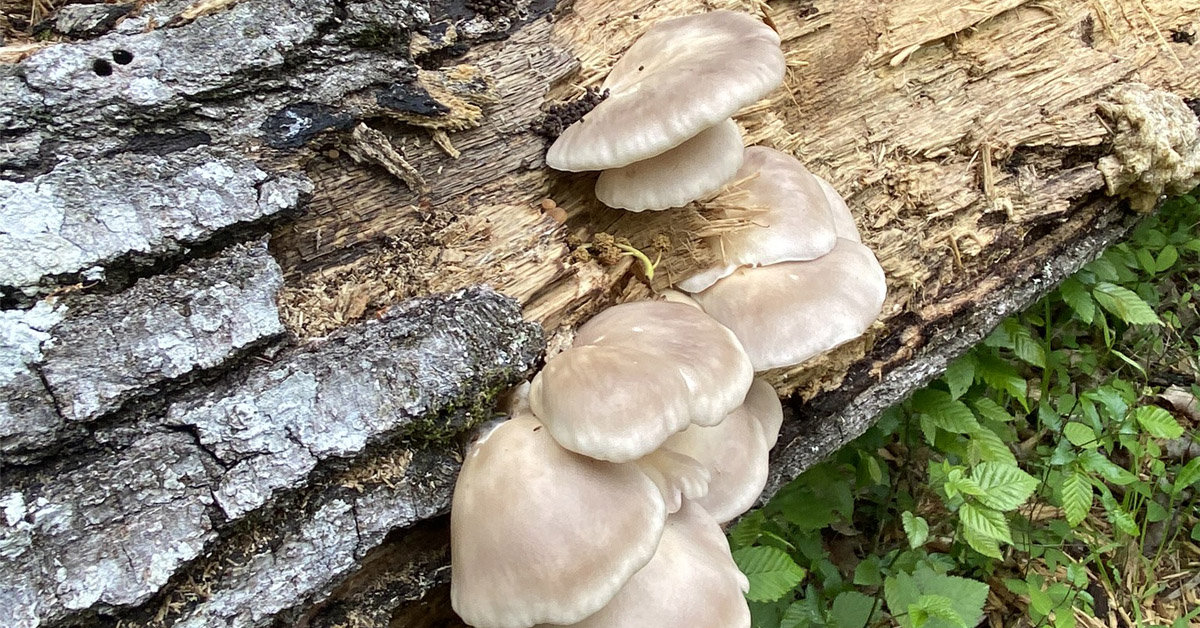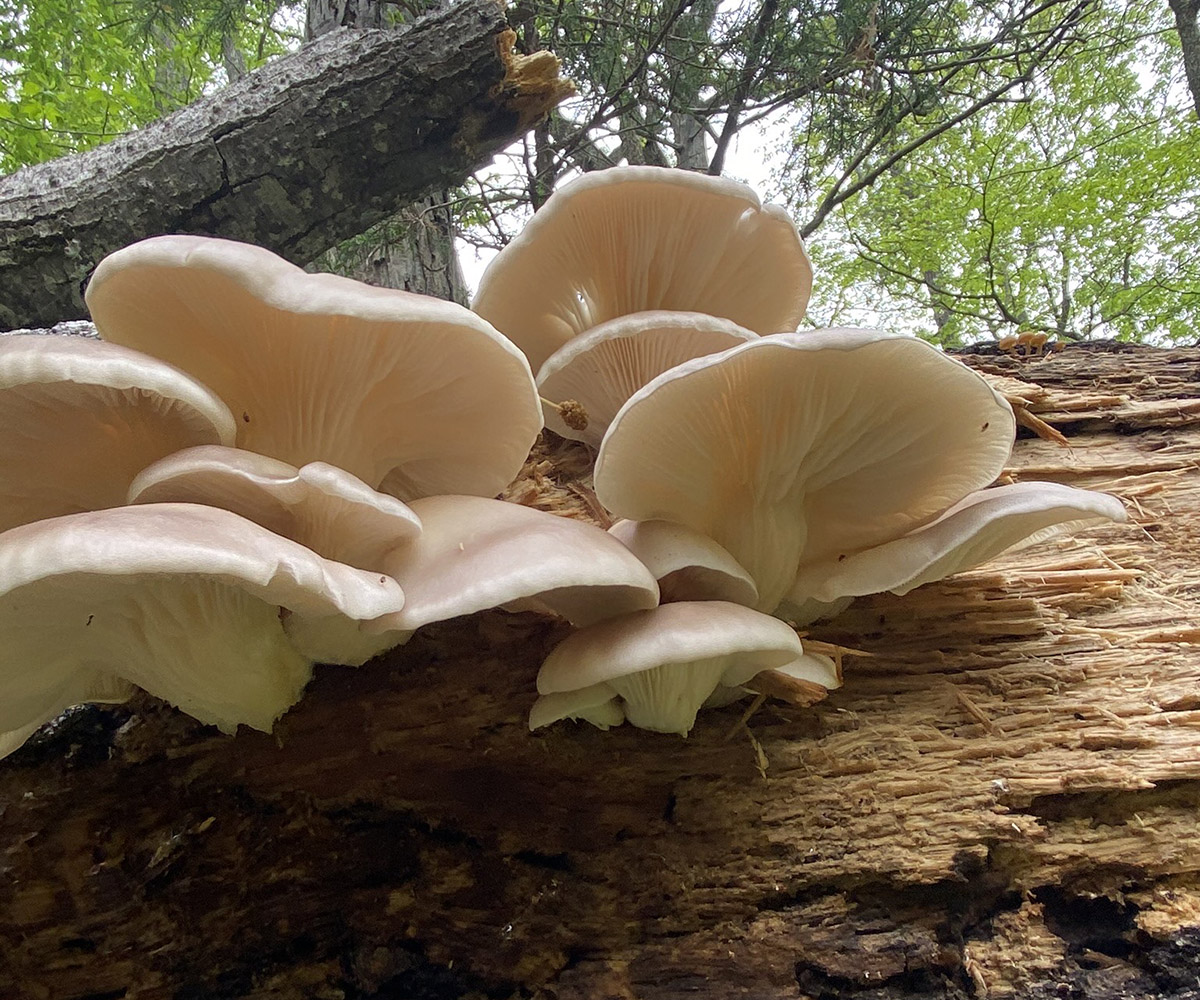
Typical oyster mushrooms
By Jonathan Bowman
Photos by Jonathan Bowman
It’s a different kind of hunting, but mushroom hunting could be your new favorite summer activity, and it might also make your usual hunting even more productive and rewarding.
Before all of you anti-mushroom people stop reading, hear me out. My good friend Landon Boisseau despises mushrooms. He will eat and try pretty much any food, but not when it comes to mushrooms. He even tells people he is allergic so he doesn’t have to try them. But, he still likes hunting for mushrooms with me. Even if you are like Landon, “not a big mushroom person,” you probably have lots of friends and family who love the edible fungi you might unknowingly walk past each time you get in the tree stand.
Before jumping into some quick basics, I want to be clear that I am by no means a mushroom expert (mycologist), and you should always make certain that any food that you forage is edible and not poisonous. It’s a good idea to either take an experienced forager or a detailed mushroom guidebook with you into the woods.
I would recommend starting by looking for something more obvious, and without a bunch of “look-a-like” mushrooms that are not edible for one reason or another. One of my favorites for beginners is the oyster mushroom.
Oyster mushrooms are fairly easy to identify, have a subtler mushroom flavor than some others, and you can cook them with any dish that calls for mushrooms. There are a few different types of oyster mushrooms in Virginia, and to my knowledge they are all edible. Oysters are fairly easy to spot from a distance, so just start looking at fallen trees while walking around the woods, and you will start finding oyster mushrooms and many other kinds.

We found nearly 40lbs this year on one fallen tree, and Katie dehydrated most of them to store them in mason jars. These made great gifts, and they rehydrated wonderfully!
To rehydrate mushrooms: add warm water for 20-60 minutes until mushrooms regain their shape. The texture is not usually quite as good when rehydrating mushrooms, but with oyster mushrooms I barely noticed a difference.
If you are cooking with fresh, wild mushrooms that you have, here is how I typically cook them:
- Rinse your mushrooms in cold water and remove any dirt that you see.
- Shake the mushrooms gently to help dry them, and/or pat dry with paper towels.
- They will still be holding some water, so this is a rare time where you will not want to add cooking oil to your pan at first.
- Sautee the mushrooms in a pan over medium-medium high heat and let the moisture evaporate from them before using them.
Add them as a side with your next backstrap, toppings for a hamburger, or add them to your next pasta meat sauce.
P.S. In order to start mushroom hunting, I strongly encourage you to join a facebook group like “Virginia Mushroom Hunters” where lots of friendly mushroom enthusiasts can help you identify your findings, or point you to resources that have more information on the species in question.
Jonathan Bowman lives in Amelia County, where he spends as much time as possible hunting, fishing, and cooking. Jonathan loves sharing his passions with others, and is determined to one day convince his wife to join him on a turkey hunt.


